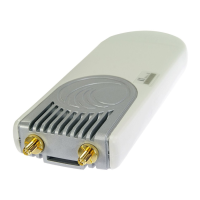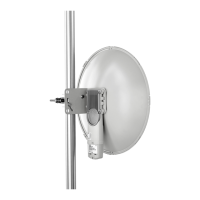Wireless operation
This section describes how the ePMP wireless link is operated, including modulation modes,
power control and security.
TIME DIVISION DUPLEXING
TDD cycle
ePMP links operate using Time Division Duplexing (TDD). The links employ a TDD cycle in which
the APs determines which SMs may transmit and when based on the configured downlink/uplink
ratio (duty cycle). Three fixed Downlink/Uplink frame ratios are available – 75/25, 50/50 and 30/70.
A flexible frame ratio is available as a fourth option where the AP dynamically determines the
downlink and uplink ratio based on data demand in each direction.
OFDM AND CHANNEL BANDWIDTH
The ePMP series transmits using Orthogonal Frequency Division Multiplexing (OFDM). This
wideband signal consists of many equally spaced sub-carriers. Although each sub carrier is
modulated at a low rate using conventional modulation schemes, the resultant data rate from all
the sub-carriers is high.
The channel bandwidth of the OFDM signal is 5 MHz, 10 MHz, 20 MHz or 40 MHz, based on
operator configuration.
Each channel is offset in center frequency from its neighboring channel by 5 MHz.
ADAPTIVE MODULATION
The ePMP series can transport data over the wireless link using a number of different modulation
modes ranging from 64-QAM to QPSK. For a given channel bandwidth and TDD frame structure,
each modulation mode transports data at a fixed rate. Also, the receiver requires a given signal to
noise ratio in order to successfully demodulate a given modulation mode. Although the more
complex modulations such as 64QAM will transport data at a much higher rate than the less
complex modulation modes, the receiver requires a much higher signal to noise ratio.
The ePMP series provides an adaptive modulation scheme where the receiver constantly monitors
the quality of the received signal and notifies the far end of the link of the optimum modulation
mode with which to transmit. In this way, optimum capacity is achieved at all times.
MIMO
Multiple-Input Multiple-Output (MIMO) technique provides protection against fading and increases
the probability of a received decoded signal to be usable.
The ePMP transmits two signals on the same radio frequency, one of which is 90 degrees offset
from the other.

